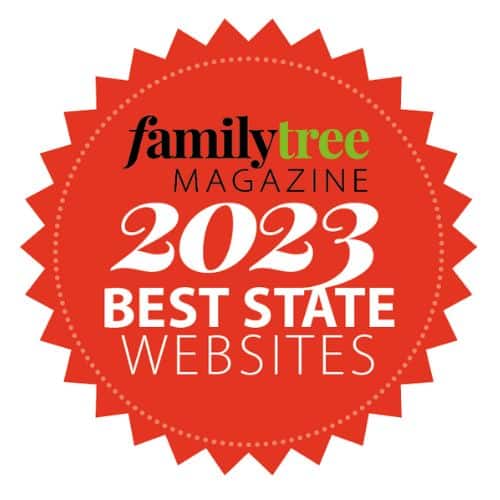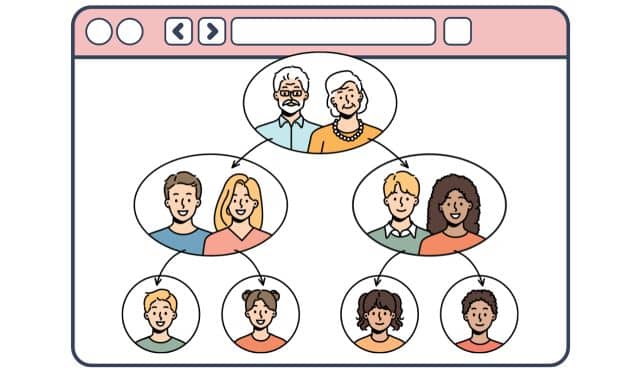Sign up for the Family Tree Newsletter Plus, you’ll receive our 10 Essential Genealogy Research Forms PDF as a special thank you!
Get Your Free Genealogy Forms
"*" indicates required fields
00:02
The USGenWeb Project has been a valuable online genealogy community for nearly 25 years. I’m Sunny Morton with Family Tree Magazine, and I’m here with a quick introductory tour of this free website where you’ll see some of the reasons that USGenWeb has been named one of Family Tree Magazine’s Best 101 Websites many times over the years.
00:25
USGenWeb is a website of national scope and a portal to websites for all 50 states, which in turn are gateways to county-level websites. All of these sites are run by volunteers who have interest in those places and who are dedicated to putting as much free local genealogy research and resources online as possible.
00:47
Because so much of our genealogy research in the United States is place-based and regional, this is a great way to organize information. Today, USGenWeb sites number in the thousands, all interconnected and free to use.
01:03
I will warn you upfront—especially for those of you who are used to the slick, sophisticated genealogy websites packed with billions of instantly searchable records—that not all of the USGenWeb sites are currently very active or have very robust content. And the searchability and the navigation can be fairly primitive.
01:24
The value I see in USGenWeb is its slow, steady trickle of accumulation of 25 years’ worth of contributions. It’s kind of like when you visit a lot of local historical or genealogical society archives or libraries: They’re not flashy, they’re not well funded, and you don’t go there expecting instant answers. Rather, you poke around and dig around in whatever gems they might have, and you ask the nice volunteers what they know. And you discover whatever someone has happened to donate or collect or transcribe.
02:00
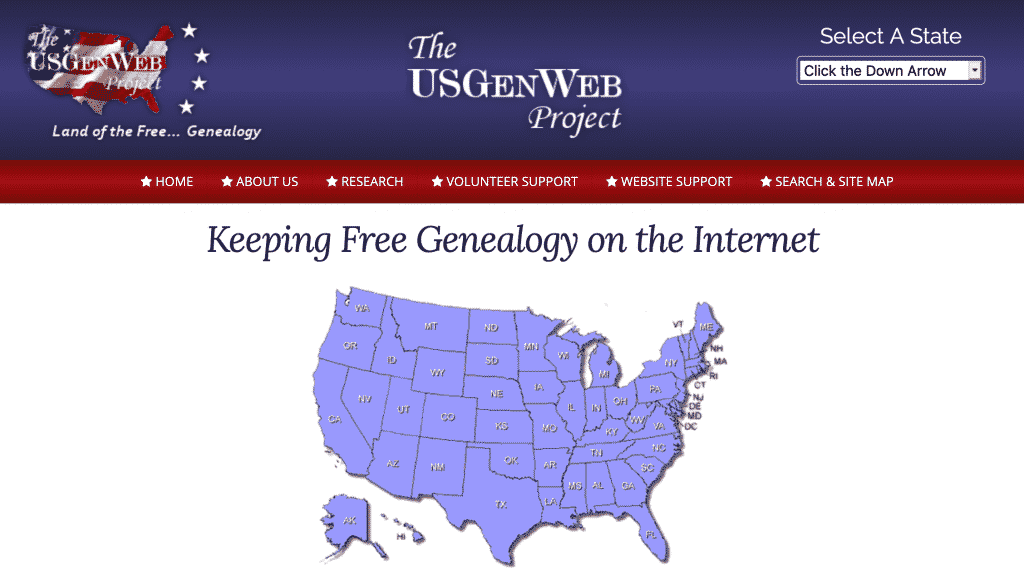
So start your visit to USGenWeb at <usgenweb.org>. Here’s the home page. There’s lots of rabbit holes to go down. Keep track of where you are, and sometimes you’ll have to back out to a place where you were recently—that’s the biggest key to success, and navigating around all these little rabbit holes you might jump down.
02:23
So on the USGenWeb home page, you’ll see that you can go ahead and jump directly to the state websites. Or you can go down and look at projects of more national interest.
But the one I’m going to spotlight here is the African American Grants project. If you click on that, it will take you to this landing page that has a variety of materials for researching those with African roots.
02:52
Here on the national page, there is—under Research—a drop-down menu of several different interesting topics in genealogy that you could choose to explore. But the main body of what you’re interested in is going to be these state-level websites.
Let’s click through to one in Ohio, where Family Tree Magazine is based. Each of these state websites is going to look different because they’re all made by different volunteers, and they’ve been constructed at different times over the years. So you’re going to find a variety of layouts, a variety of graphics and navigation. But also, of course, a variety—tremendous variety—in the records themselves that are posted, or the transcripts and resources.
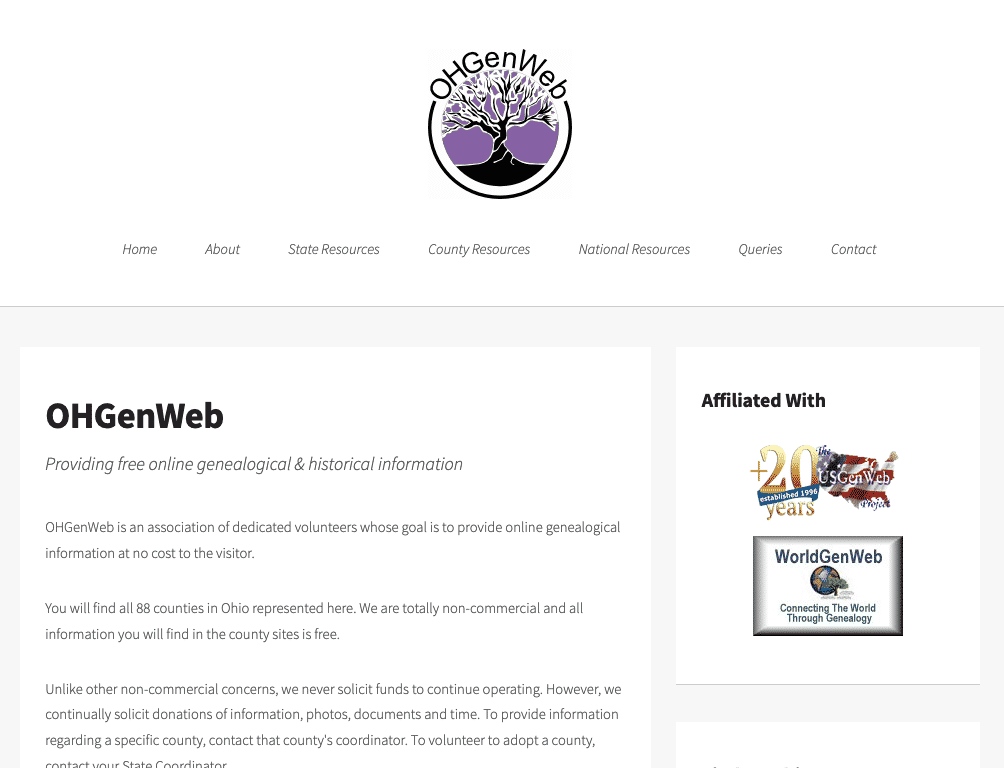
03:34
So here on the landing page for OHGenWeb, I can scroll down a little bit and see that there’s some basic genealogical and historical information about Ohio. Here, there’s a state resources page that will take me to links of statewide research interest. Under the County Resources, I find that the one that’s most interesting to me is Vital Records, where there’s a nice little table of when vital records began in different counties of Ohio.
There’s also a Queries area. The queries here will link you to what’s now hosted on Ancestry—their message boards—and you can see that you can search these message boards, which have been active (some of them) for a long, long time. Where you could enter a surname or a place that kind of thing. Whatever you’re interested in, you want to make sure that you search.
Click to search the state message board that you’re interested in. And then I can see who was posting things about my surname of Selby. And I see there’s a lot for me to look through.
I can come down here and—see, if you go back to the [Ohio] home page again…Trying to keep yourself oriented—I could come down here to Special Projects. Or I could click into find a county. So the Special Projects I would like to show you are the USGenWeb Archives and the Tombstone Transcription Project (which we can get to from the Archives). So you can click in here and see that there’s lots of different places to go here across the top banner. But then there’s also a lot of stuff down here.
So in this case: The Tombstone Transcriptions Project, which is national in scope, but is going to look a little different for every state. You can go in and see what’s been done in this particular state. They’ve organized it by county.
Let’s click on Cuyahoga County and see what they have. What you’re going to find here is the tombstone transcription is not something that’s easily searchable and image-friendly as you might find it [on] some of our really large tombstone transcription websites like BillionGraves or Find a Grave. Rather, you’re going to find some things that are a little bit more primitive but still really valuable.
So if you look down here, you can see this is just a really simple index of burials there. But if you think that—maybe this was done 15 years ago, maybe some of these stones have since disappeared or become illegible—so this reading that was taken of the tombstones in this transcription could be incredibly valuable. And certainly, because it’s searchable, it’s very helpful for you to use.
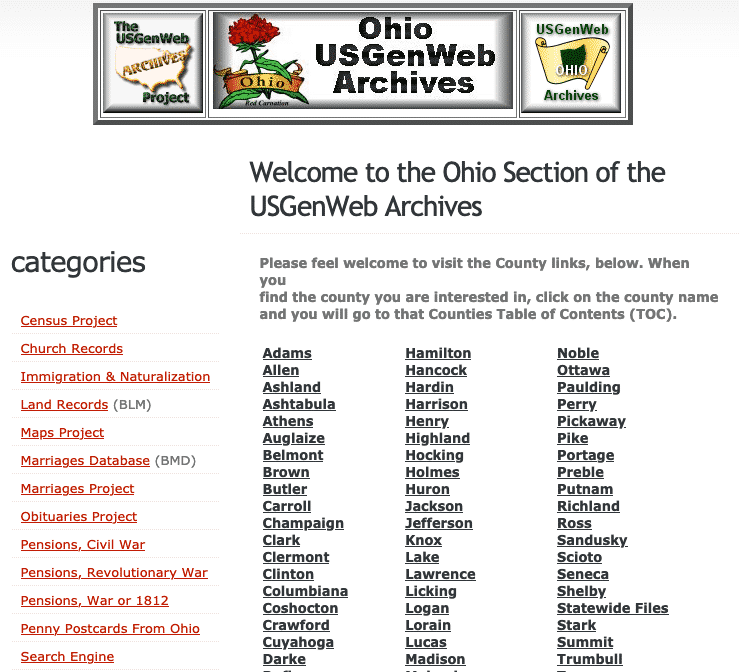
06:11
Now I’m back to the Ohio Archives section here. And you see, there’s lots of interesting categories to look at, as well as links to the archives for each of the counties of Ohio. If I start clicking through some of these, I might be disappointed. I might get broken links or there might be nothing there. But then I might click on something lovely like this Maps project that will show me lots of different historical maps in Ohio and resources for even more maps.
06:42
I can also click on a county of interest, and let’s say I click on Hamilton County. This has not been updated since 2011, but there are some interesting record types that I could click through and look at. And this is the kind of thing you just start clicking. You’re not going to break anything—just go in and look and come back out and weave your way through these websites.
I want to emphasize that this Hamilton County landing page in the Archives here is not the same as the OHGenWeb Hamilton County page itself. Let’s say I wanted to look at Hamilton County. So what you’re seeing here is going to be the Hamilton County landing page here for OHGenWeb, and what you’ll find, again, will vary from county to county. Might give you a little bit of background, a little bit of local color, where to find records. And then lots of these great links on different kinds of records you might be looking for.
07:44
That’s just one quick example of the variety of websites, record transcripts and other resources you may find on USGenWeb. Remember: Every state and county will be a little different, and some of the postings will be very old and your user experience may seem kind of primitive. That’s not going to make your discoveries any less valuable. Take your time and explore what’s there on USGenWeb.
08:10
I’m Sunny Morton with Family Tree Magazine.
USGenWeb Quick Links
- Home
- Census Images
- Church Records Project
- Court Case Reports
- Digital Map Library
- Document Care
- Lineage Researchers
- Maiden Names
- Marriage Project
- Obituary Project
- Old Occupations Explained
- Queries & Look Ups
- Tips for Locating an Obituary
- The Tombstone Transcription Project
- USGenWeb Archives Newsletter
- USGenWeb Archives Search Engine
- Volunteer Information
- WorldGenWeb
ADVERTISEMENT

